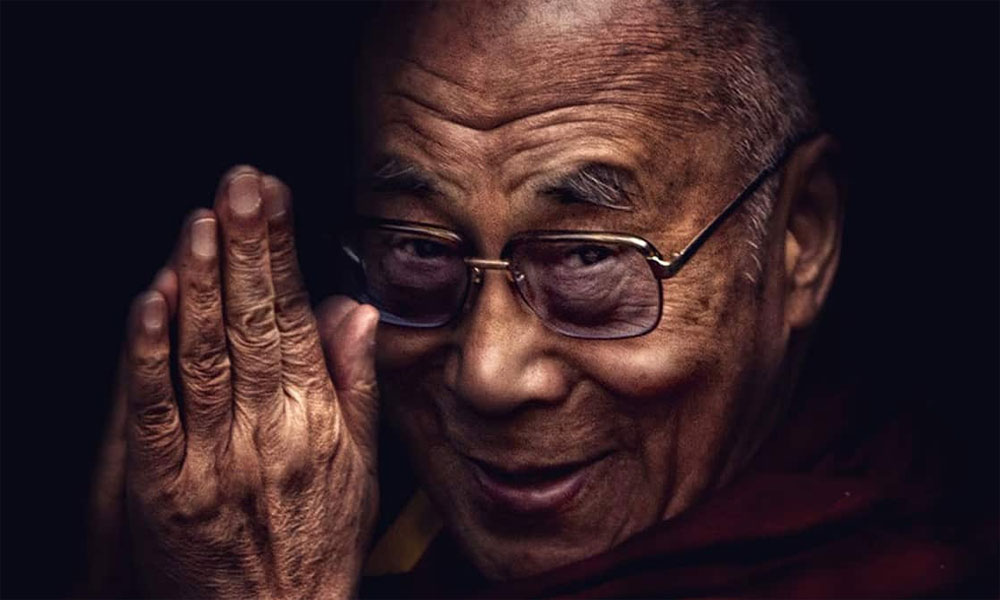
Have you ever wondered how to practice meditation correctly? Sure, you’ve probably heard bits and pieces about focusing on your breath or focusing on different parts of your body, but according to the Dalai Lama, this is not what true meditation is.
In The Art of Happiness: A Manual for Living , the Dalai Lama says that meditation is about seeing your “natural state of consciousness.” He says that the number one key is about observing the mind.
This is how the Dalai Lama recommends you practice meditation
“Generally speaking, our mind is directed predominantly towards external objects. Our attention follows the experiences of the senses. It remains at a predominantly sensory and conceptual level. In other words, normally our awareness is directed toward physical sensory experiences and mental concepts. But in this exercise, what you have to do is withdraw your mind inward; don’t let him chase or pay attention to sensory objects. At the same time, do not allow it to withdraw so much that there is a kind of dullness or inattention. You must maintain a very complete state of alertness and attention, and then try to see the natural state of your consciousness, a state in which your consciousness is not affected by thoughts of the past, the things that have happened, your memories and memories; nor is he troubled by thoughts of the future, such as his future plans, anticipations, fears, and hopes. Rather, try to stay in a natural, neutral state.”
Wise words from the Dalai Lama. But you may be wondering:
How do we actually practice bringing your natural state into your awareness?
The Dalai Lama says that it is a bit like looking at a river flowing quite strongly:
“This is a bit like a river flowing quite strongly, where you can’t see the riverbed very clearly. However, if there were some way to stop the flow in both directions, where the water is coming from and where it is
flowing to, then it could keep the water still. That would allow you to see the base of the river quite clearly. Similarly, when you are able to stop your mind from chasing sensory objects and thinking about the past and future, etc., and when you are also able to free your mind from being totally “blank”, then you will begin to see underneath this turbulence. of thought processes. There is an underlying stillness, an underlying clarity of mind. You should try to observe or experience this…”
While this is great advice from the Dalai Lama, it can be difficult to implement in practice. I know because I struggled with meditation in my early days even though I knew intellectually what the Dalai Lama was talking about.
However, when I learned a practice called “mindfulness meditation”, the process became much easier and I was finally able to implement what the Dalai Lama was saying. We want to share practical tips that you can use to live a mindful life. I think this meditation technique is just that.
Looking is an ancient meditation technique. It can be done as a stand-alone meditation practice or when you need to settle down. While the meditation is usually done with your eyes closed, this meditation is done with your eyes open, gently directed toward an external object, such as a rock or candle flame.
I think this practice can be helpful in improving your focus. I have steadily moved from keeping my focus on the object for 1-2 minutes to now 10-15 minutes.
In fact, studies have suggested that compared to non-meditators, meditators may be better equipped to calm brain activity related to mind wandering. This is what I found. After all, meditation is about maintaining a calm focus on something in an effort to calm the mind and reduce mind wandering.
9 Easy Steps to Practice a Candle Gazing Meditation
Here’s how to practice mindfulness meditation, according to the mindfulness experts at Ornish. Keep in mind that you don’t have to use a candle, it can also be anything you find uplifting.
1. Find a stable and comfortable sitting posture, either in a chair or on the floor.
2. Place a lighted candle in front of you, either at eye level or on the ground. (if you place the candle on the ground, try not to drop your head forward in an effort to see the candle. Maintain a steady, balanced sitting posture)
3. Settle into your sitting position as you take several slow, deep, conscious breaths.
4. Allow your eyes to soften and relax as you gaze into the candle flame. Notice any sensations you feel. Let your attention rest there for as long as you feel comfortable.
5. When the eyes get tired, gently close them and bring the image of the candle flame behind the eyes or between the eyebrows.
6. Visualize the flame at that point. When the image of the flame fades, allow the eyes to gently open again. (This may be familiar as many of us have found ourselves looking at candles or even a campfire and drawn to the sense of stillness it inspires.)
7. Continue the practice of staring at the flame and then closing your eyes and holding the image behind your eyes (or the point between your eyebrows).
8. At some point you may not want to open your eyes to the external flame. At that time feel free to rest within yourself with the image. Instead, you may find that keeping your eyes on the flame without closing them is more helpful to you. You may even find that this practice serves as a foundation for moving inward with other breathing and meditation practices.
9. Notice how you feel. Let the practice flow. If it helps calm your mind, then make it your own. Play with it and find a way to use it in your own life.